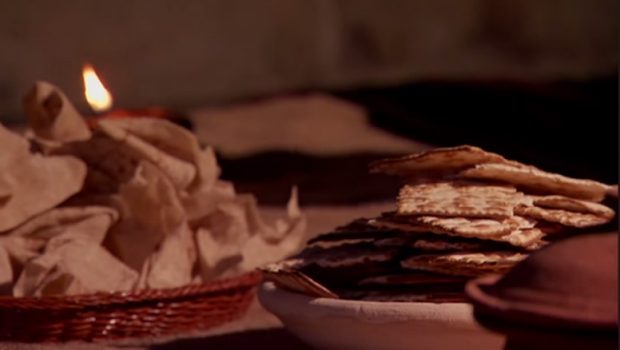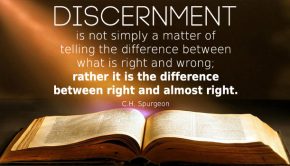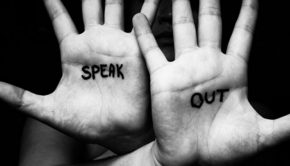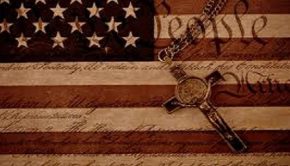Holy Week: The Last Passover
Author’s Note: We have no record of Jesus’ activities on Wednesday of Holy Week. However, there are two significant events that occur on Maundy Thursday, so I split them into two posts. This one discuss Jesus’ final Passover. The next will cover Jesus’ time in Gethsemane.
The Jewish Passover is rooted in the Exodus from Egypt. If you read it, you will discover the word “remember” occurs again and again. “Remember the night you put blood on your door.” “Remember when the angel of death passed by.” “Remember when you left Egypt.” “Remember when you were camped on the shore of the Red Sea and the Egyptian army was coming in the distance.” This context implies an intense focus that would allow a memory to shape you as you reflect on it. The key to Passover was not a big celebration or a specific meal. While it certainly was both of those things, the key to Passover was to, “Remember that the LORD brought you out of Egypt to save you.” And Thursday night of Holy Week, Jesus came to that meal employing that theme, telling his disciples to “remember.”
 In the Exodus, God brought his people to Sinai. After making a covenant with Israel, He had the elders sit down for a meal. Culturally, a meal was a way of resolving, reconciling, and bringing people together. At Sinai, it’s as if God was saying, “This covenant is my way of showing you my mercy and resolving the differences between us. Let’s eat together.” So, in a sense, the Passover meal, from Moses onward, is a reminder of reconciliation between God and people and between people and people. But Jesus adds another dimension. He uses the Passover meal to link together the salvation experience of the Hebrew people from Egypt to the salvation he came to offer. Let’s walk those last few hours with Jesus and his disciples as they ate the Passover meal for the last time.
In the Exodus, God brought his people to Sinai. After making a covenant with Israel, He had the elders sit down for a meal. Culturally, a meal was a way of resolving, reconciling, and bringing people together. At Sinai, it’s as if God was saying, “This covenant is my way of showing you my mercy and resolving the differences between us. Let’s eat together.” So, in a sense, the Passover meal, from Moses onward, is a reminder of reconciliation between God and people and between people and people. But Jesus adds another dimension. He uses the Passover meal to link together the salvation experience of the Hebrew people from Egypt to the salvation he came to offer. Let’s walk those last few hours with Jesus and his disciples as they ate the Passover meal for the last time.
 The meal was held in an upper room, a guest room, the type of room that was full at the time Jesus was born. The table would have had three sides with the serving done from the middle. Given this information, a legitimate question would be, “Who sat where?” Our culture suggests the host at the center of the table, like in da Vinci’s grossly inaccurate painting. However, in Near Eastern culture, the host’s seat would be the second one in on the right and the last seat on the left would be the servant’s seat.
The meal was held in an upper room, a guest room, the type of room that was full at the time Jesus was born. The table would have had three sides with the serving done from the middle. Given this information, a legitimate question would be, “Who sat where?” Our culture suggests the host at the center of the table, like in da Vinci’s grossly inaccurate painting. However, in Near Eastern culture, the host’s seat would be the second one in on the right and the last seat on the left would be the servant’s seat.  This was the seat of the person who washed the guests’ feet. Normally, it would be one of the members of the family of the household, because serving in this way was a great honor. In the rabbinic world of Jesus’ day, there was a debate about how the seating should be arranged. How do you decide who is honored? How do you decide who should serve? Oldest to youngest? Wisest to the learner? So, when Jesus’ disciples entered the upper room, there must have been a discussion about who was going to sit where,
This was the seat of the person who washed the guests’ feet. Normally, it would be one of the members of the family of the household, because serving in this way was a great honor. In the rabbinic world of Jesus’ day, there was a debate about how the seating should be arranged. How do you decide who is honored? How do you decide who should serve? Oldest to youngest? Wisest to the learner? So, when Jesus’ disciples entered the upper room, there must have been a discussion about who was going to sit where, because, as the meal starts, they immediately get into a debate about who is the greatest (Luke 22:24). They aren’t arguing about this out of nowhere.
because, as the meal starts, they immediately get into a debate about who is the greatest (Luke 22:24). They aren’t arguing about this out of nowhere.
The Gospel writers tell us that at that meal they reclined at the table. In the Exodus story, God commanded they eat the meal standing up because they had to be ready to leave. However, when the Jews got to the Promised Land, they said, “God has given us the land of rest He promised.” So they began resting or reclining at the Passover. Reclining was done on your side with your weight on your left elbow. You would, then, eat with your right hand. This meant that during the meal, you would be looking at the back of the person next to you and carry on a conversation with the back of their head. And if you wanted to talk to someone behind you, you would have to lean back, possibly up against them. So, do we know where anyone sat?
Assuming Jesus is in the host’s seat, we can be safe in assuming that John is in front of him because the text says that John leaned back against Jesus’ chest (Jn. 13:25, 21:20) which is only possible from that position. Believe it or not, the second honored seat behind Jesus would have been filled by Judas, who had already betrayed him. Recall that during the meal, they both dip together in the same bowl and the custom was three people would dip out of the bowl closest to them. It seems that Peter is in the servant’s seat. Remember, during the meal, Jesus got up, took a wash basin, filled it with water, and began making the rounds washing feet. The text says, “When he came to Peter…” (Jn. 13:6), indicating that Peter is somewhere down the line, and Peter objects to Jesus washing his feet seemingly suggesting that he should wash Jesus’ feet. This could be because Jesus was his Rabbi and Messiah or it could be because it was his position and his responsibility that night.
Remember, during the meal, Jesus got up, took a wash basin, filled it with water, and began making the rounds washing feet. The text says, “When he came to Peter…” (Jn. 13:6), indicating that Peter is somewhere down the line, and Peter objects to Jesus washing his feet seemingly suggesting that he should wash Jesus’ feet. This could be because Jesus was his Rabbi and Messiah or it could be because it was his position and his responsibility that night.
Jesus, then, used moment to address the “Who is the greatest?” debate. When he was finished washing their feet, the text says Jesus took his robe up again and asked, “Do you realize what I just did?” (Jn. 13:12). The original language isn’t clear if Jesus took his robe off then put it back on or if he took it down from a hook on the wall and then put it back up when he was done. While the former is logical, the latter is much more poignant, powerful, and a very rabbinic, Jewish way of teaching with dramatic actions. The point is Jesus laid his cloak down, served his disciples by washing their feet, and then picked it back up again. What is intriguing is that earlier in John, the same Gospel in which we find this foot washing, Jesus says, “No one takes my life from me. I lay it down of my own accord, and I take it up again,” (Jn. 10:18). How were they supposed to lay their life down? How were they supposed to take it up again? Jesus showed them. You lay down your life and take it up again when you lay it down in the service of someone else. And that room of disciples, students, who wanted to be just like their teacher, who had just been arguing about who was best and who should be first, received a powerful lesson from their rabbi.

Mountains and Wilderness of Sinai
Let’s examine how the actual meal went. Passover is built around the number 4. In Exodus, God made 4 promises which are the heart of the celebration. The 4 promises, from Exodus 6:6-8, are, “I will take you out,” “I will set you free,” “I will redeem you,” and, “I will take you” or “protect you.” When God said “I will take you out,” it meant: “Tomorrow, you aren’t going to be beaten. You won’t have to make bricks. They won’t throw your babies in the Nile. Because I’m going to take you out with an outstretched arm and mighty acts of judgment.” Then he said, “I know you were slaves. So, I will take your slave nature away and set you free.” Then he said, “You we’re stained with the sins of Egypt, so I will redeem you. I will clean you.” After all this, maybe the Israelites thought, “What if we go back?” So finally God said, “I will take you to myself. You will be my people. I will be your God. I will protect you.” Those are the 4 promises. As was custom, Jesus and the disciples almost assuredly recited those 4 promises that night. Over the years, Jews developed a practice of drinking 4 cups of wine during the meal to remember those 4 promises. Historically, it’s more likely that Jesus and his disciples drank at 4 different points during the meal rather than having 4 separate cups like in later traditions, but it was certainly the practice to take 4 drinks of wine as you remembered each of the 4 promises.
In light of all this, let’s picture the disciples reclined around the table. They would have begun by reciting the shema (Deut. 6:4-5) and Jesus might have added Leviticus 19:18 as well. Then, Jesus would have started telling the Exodus the story, probably from memory, and coming to the first promise, “I will take you out from under the yoke of the Egyptians,” he would have blessed the cup the first time. This seems to be the cup mentioned in Luke that Jesus drinks, but does not turn into the Lord’s Supper (Lk. 22:17). Then, he came to the second promise, “I will set you free ,” just before they started eating. It seems that this cup isn’t mentioned in the Gospels. The meal would have begun with a dipping. According to Exodus 12, there are 3 things required at Passover: lamb, unleavened bread, and bitter herbs. We are familiar with the significance of the lamb and the bread, but the bitter herbs were there to remind the Israelites of the salt of their tears, their sweat, and the bitterness of being in slavery. It’s at this moment that Jesus chooses to address this issue of his betrayal. He has just blessed the cup about being set free and, before they eat, says, “But one of you is going to turn me over.” The disciples begin to ask who it is and Jesus said, “It’s someone who dips with me,” (Mt. 26:23) and he took the matzo, the unleavened bread, which was their silverware, and he dipped in the bitter herbs and gave it to Judas (Jn. 13:26). Jesus was making it clear that Egypt wasn’t the only bondage we needed freedom from. Then, they would have eaten the meal and while they were eating, Jesus took the matzo, the unleavened bread, and gave a new teaching (Luke 22:19).
Leaven represented sin, so God told the Hebrews, “When you leave Egypt, leave the sin of Egypt behind,” which was symbolized by leaven so there was no leaven in that meal. And Jesus picked up the matzo and said, “This bread is my body.”  “This bread that represents your deliverance from bondage, this bread without leaven, this sinless bread is my body, my sacrifice, my offering. For you. Eat it and remember me.” And every time after that point when the disciples celebrated Passover and had that unique taste of bread without yeast, they would have remembered.
“This bread that represents your deliverance from bondage, this bread without leaven, this sinless bread is my body, my sacrifice, my offering. For you. Eat it and remember me.” And every time after that point when the disciples celebrated Passover and had that unique taste of bread without yeast, they would have remembered.
After the meal was finished, Jesus came to the third promise, the third cup. Both the Gospel writers and Paul identify this as the cup Jesus uses to institute the Lord’s Supper. This cup is used to remember the promise, “I will redeem you.” And quite significantly Jesus took that cup and said, “This is my blood offered for you. Drink and remember.” In that moment, he instituted a new covenant tying together Noah, Abraham, Moses, and David all in himself. As the disciples sat in silence after this new teaching, they were undoubtedly waiting for the last cup that comes after the end of the meal. It’s used to remember the promise, “I will take you to myself” as God brought the Israelites to Sinai to cover them, to marry them, to protect them. They waited for that cup of protection. But Jesus said, “I’m not going to drink again until I drink new,” (Matt. 26:29). Imagine the conversation…
“But Jesus, that night in Egypt, the Red Sea was ahead of us. And Pharaoh showed up with 600 chariots behind us. We needed God’s protection that night.”
“I will not drink again.”
“But you said one of us going to betray you. I’ve heard the Sadducees are plotting. And the Romans are out there too.”
“I will not drink again.”
And in a deeply profound moment, Jesus, the Passover Lamb of God, intentionally left that Passover meal without drinking to God’s protection.
At the first Passover, the Israelites were commanded to eat standing up and, after they ate, to wait and watch. They knew the Destroyer was going to pass by that night. For Jesus, like the children of Israel on that first Passover night, he went out from that meal to a garden…to watch. He asked his disciples who were with him…to watch (Matt. 26:38-41). Something was coming.











